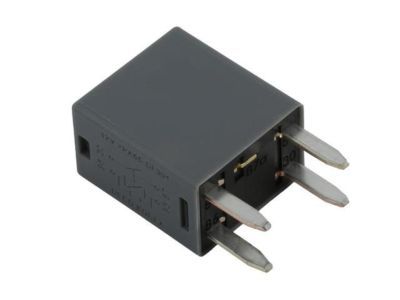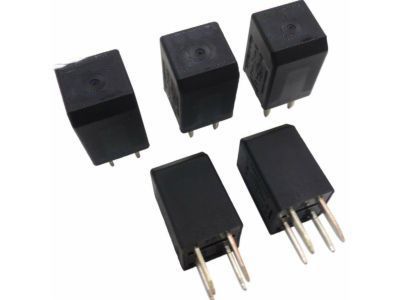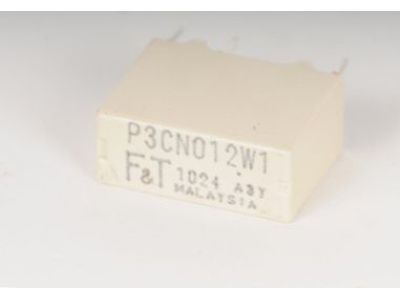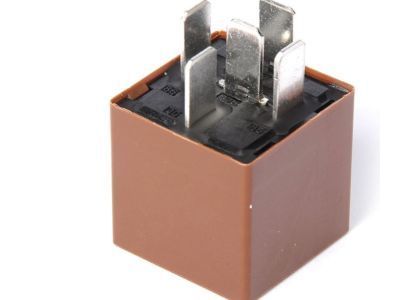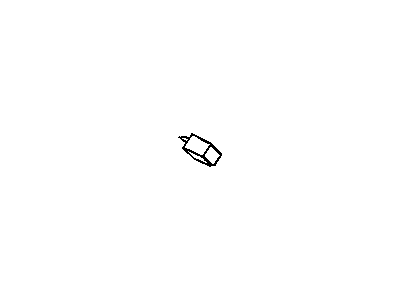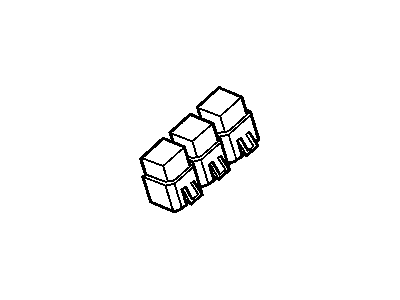My Garage
My Account
Cart
Genuine GMC Terrain Relay
Wire Relay- Select Vehicle by Model
- Select Vehicle by VIN
Select Vehicle by Model
orMake
Model
Year
Select Vehicle by VIN
For the most accurate results, select vehicle by your VIN (Vehicle Identification Number).
13 Relays found
GMC Terrain RELAY ASM,ACSRY TIME DELAY CUTOFF *GRAY
Part Number: 13500114$9.54 MSRP: $20.04You Save: $10.50 (53%)Ships in 1-2 Business DaysGMC Terrain RELAY ASM,FAN CONT
Part Number: 13503103$4.82 MSRP: $10.77You Save: $5.95 (56%)Ships in 1-2 Business DaysGMC Terrain Relay
Part Number: 13500113$7.74 MSRP: $14.60You Save: $6.86 (47%)Ships in 1-2 Business DaysGMC Terrain Relay Assembly, Multiuse
Part Number: 13422668$30.81 MSRP: $56.02You Save: $25.21 (45%)Ships in 1-2 Business DaysGMC Terrain RELAY ASM,WSW MOT *BLACK
Part Number: 13500126$11.71 MSRP: $21.00You Save: $9.29 (45%)Ships in 1-3 Business DaysGMC Terrain Relay
Part Number: 13468934$7.55 MSRP: $14.24You Save: $6.69 (47%)Ships in 1-2 Business DaysGMC Terrain Relay Asm,Headlamp High Beam *White
Part Number: 19115081$17.24 MSRP: $26.12You Save: $8.88 (34%)Ships in 1-2 Business DaysGMC Terrain Relay Asm,Multiuse <See Guide/Contact Bfo>
Part Number: 13306940$14.48 MSRP: $26.32You Save: $11.84 (45%)GMC Terrain Relay
Part Number: 13598349$10.97 MSRP: $20.70You Save: $9.73 (47%)Ships in 1-2 Business DaysGMC Terrain Relay
Part Number: 13598347$9.94 MSRP: $18.76You Save: $8.82 (48%)Ships in 1-2 Business DaysGMC Terrain Relay
Part Number: 84095361$5.35 MSRP: $8.00You Save: $2.65 (34%)Ships in 1-3 Business Days
GMC Terrain Relay
Each OEM GMC Terrain Relay we offer is competitively priced and comes with the assurance of the manufacturer's warranty for the part. Furthermore, we guarantee the speedy delivery of your orders right to your doorstep. Our hassle-free return policy is also in place for your peace of mind.
GMC Terrain Relay Parts Questions & Experts Answers
- Q: How to test and diagnose a faulty relay on GMC Terrain?A: Relays carry out the transmission of electrical signals to many electrical accessories found in vehicles, including fuel injection system, Horns, starter, and fog lamps. The low-current circuit (the control circuit) is used by relays to open and close a high-current circuit (the power circuit). Defective relay may cause the related component to malfunction. Most relays are located in the engine compartment and interior fuse/relay boxes with primary fuse/relay panel being found in the engine compartment upon unlocking the tabs and removing both the outer and inner covers. To diagnose a suspected faulty relay, remove it for testing according to the procedure described or contact a dealer service department or repair shop where defective relays must be replaced as complete units. When testing relays, you should remember: Most of these vehicle's relays follow "ISO" relay standard which means International Standards Organization. These ISO relays have numbered terminals that indicate their normal circuit connections and functions. External labels often exist on these vehicles' relays that show control and power circuits for easy identification because they have two basic terminal layouts. Generally, terminals 85and 86 represent typical relay control circuits connecting them to the coil while other relay terminals relate to power circuitry. On energizing the relay, its coil produces a magnetic field that closes larger contacts within the power circuitry to drive loads on this circuitry. Typically, terminal 86 is connected to battery positive (B+) voltage while terminal 85 is grounded via diode; for resistor cases one could connect terminals either way with respect to B+ and ground or simply ground at terminal 85 with B+ at terminal 86. Terminal 30 is usually connected directly with battery voltage (B+) source for loads whereas terminal 87 establishes connection with ground side of this load through a load or simply it may be accompanied by other terminals like 87A, 87B, 87C etcetera for loading or grounding. Continuity through the relay control coil should be checked with an ohmmeter observing proper polarity during testing. The resistance should be the same irrespective of the polarity of the leads on the ohmmeter and for relays with a diode, higher resistance is recorded in forward direction of polarity. If infinite resistance is indicated on the ohmmeter in both directions, then change relays. Lastly, check for continuity between terminal 30 and 87 when relay is de-energized by removing the relay from the vehicle and using an ohmmeter to test continuity across its power circuit terminals; there should be no continuity between terminal 30 and 87 if it is healthy. On connecting fused jumper wires to terminals 86and 85, as well as positive battery terminal and ground correspondingly, relay makes a distinct click as soon as connections are established therein. In this configuration, terminals 30 and 87 should show continuity. If any of these tests fails, replace the relay.

